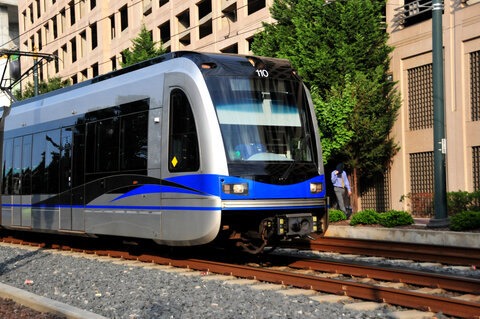In recent posts, I have looked at costly light rail projects in Austin and Minneapolis whose sponsors are seeking federal funding. Not to be outdone, Los Angeles has its own high-cost LRT extension in the Federal Transit Administration’s (FTA) grant pipeline. A change of administration is a great time to reevaluate these projects because they usually don’t pencil out under reality-based cost-benefit analysis. And even if they did pencil out, we’re still left with the question of why local transit agencies should be able to access billions of dollars from federal taxpayers to fund their initiatives.
LA Metro’s proposed Southeast Gateway Line is projected to cost $8.7 billion of which $3.7 billion would come from federal taxpayers. Relative to some other recent rail projects, which are clocking in at over $1 billion per mile, Southeast Gateway is a bargain at “just” $600 million for each of its 14.5 miles.
But the benefits Angelinos will get for the $8.7 billion expenditure are questionable. A ridership study conducted for the project’s Environmental Impact Report estimates that the line will carry just 31,000 on weekdays in 2042.
But these estimates are based on a pre-COVID-19 model. At the time that model was run, state demographers expected Los Angeles County’s population to reach 11.1 million in 2042. But the county suffered a large population decline during the pandemic, and forecasters have become more bearish on population growth. Their 2042 population forecast for Los Angeles County is now only 9.7 million.
Further, the propensity to use transit has fallen since COVID-19 due to the rise of remote work and concerns about safety on buses and trains. Between lower population and less willingness to use transit, it is likely that an updated modeling exercise will yield a significantly lower ridership projection.
But even if the projection of 31,000 rides per day could be achieved, it would be well within the capacity of Bus Rapid Transit (BRT), a much less expensive alternative to light rail. According to an FTA brochure, BRT has an hourly capacity of 10,000–30,000 passengers—well above what LA Metro would expect for peak-hour service on the Southeast Gateway Line.
It appears that the last time LA Metro considered BRT for the new line was way back in 2012, when the agency concluded that the alternative would provide insufficient capacity. But now that the required capacity is lower and BRT has further evolved, this option should be reconsidered.
Not only is BRT far less expensive than rail, but it can also be completed more quickly, providing transit users a new option earlier than would be the case with LRT. Further, BRT may have less impact on motorists if cars share the bus lane at certain times of the day along some or all portions of the route.
Before moving forward with such an expensive transit project, local and federal officials should revisit the BRT alternative for the Southeast Gateway. And, more generally, the new Administration and Congress should ponder whether we should even have federal transit grants at all.

